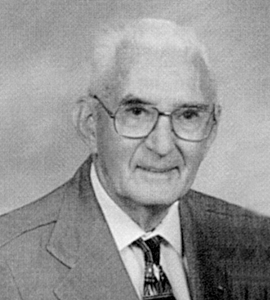LOOKING BACK … WAYNEDALE HISTORY
 Barb Noble dropped her husband, Ed off at The Waynedale News on Wednesday. Ed came in carrying a large picture of the Chamber of Commerce of Waynedale Charter Membership. The 2ft x 3ft picture frame listed 42 Chamber members from 1930. Amongst the names were Lester Umber of Umber’s Hardware, Jim Ferguson of Ferguson Carpentry, and Rex Roof of Indland Oils Co. Ed Noble of Noble Realty was one of those members. Ed also carried a file folder stuffed with old pictures and news clippings chronicling the early days of Waynedale.
Barb Noble dropped her husband, Ed off at The Waynedale News on Wednesday. Ed came in carrying a large picture of the Chamber of Commerce of Waynedale Charter Membership. The 2ft x 3ft picture frame listed 42 Chamber members from 1930. Amongst the names were Lester Umber of Umber’s Hardware, Jim Ferguson of Ferguson Carpentry, and Rex Roof of Indland Oils Co. Ed Noble of Noble Realty was one of those members. Ed also carried a file folder stuffed with old pictures and news clippings chronicling the early days of Waynedale.
We sat and talked about the old days but there were pauses in the conversation, as Ed sometimes would lose his train of thought. “It’s like a curtain falls in front of the topic, and I can’t seem to recall what we were talking about, ” Ed said, as he apologized for the gaps in our conversation.
Ed had written a number of articles back in ’95 & ’96. He wanted to know if we would like to re-run the old stories in The Waynedale News. I told him we would be happy to have a look at them and run them as space allowed. Following is the first of Ed Noble’s articles.
IN THE BEGINNING
by Ed Noble
Where does the history of Waynedale start? The good old days? When was this? The first business? Roads? School? Indian days? Early Settlers? Sports? Clubs? All of these and more will be covered in this continuing group of twenty articles.
Today, let’s start our “Waynedale History” about 30,000 years ago when the Wisconsin Glacier carved its imprint in Waynedale. The last Ice Age left a terminal moraine running southwest towards Roanoke. This 4-mile x 9-mile moraine created a marshy prairie and yielded the shortest passage of all North American navigable waters between Canada and the Gulf of Mexico. For hundreds of years Indiana traders and guides brought travelers from central Canada through Lake Superior, Lake Huron, Lake Erie, up the Maumee River and the St. Mary’s River, through the portage the Indians called the “Glorious Gateway” then down the Wabash and Mississippi Rivers to the Gulf of Mexico and onto South America.
For hundreds of years, rivers and lakes were the highways of travel, and he who commanded these rivers were in command of all trade.
All important were the southwest shores of the St. Mary’s River where the portage started and continued west along Lower Huntington Road which was provided by the shoreline of ancient Lake Erie.
If you could use your imagination…picture yourself leaving Lake Erie with 2 Pirogues (boats) and an Indian guide who has about 6 months experience on learning English. You manage pretty well considering going upstream “push and shove” …and the diet is whatever the Indian likes. You make it to the 3 rivers and continue upstream to the St. Mary’s River to the all-important southwest shores of the river where you meet an Indian who knows English fairly well. You dicker with him over the price he wants and arrange an Indian guide to go through 9 miles of marshy mud, more mud, and more mud and more mud 3-4 feet deep. You have argued about the trustworthiness of your short muscle-bound Indian, who knows the portage very well. The merchant assures you that the Indian knows where the beavers have built dams…he knows the shortest route, so…lets go. At first, all goes well, your energy is close to that of the Indian guide. This is still upstream until you get to what is now Ardmore (Hayden Rd.). By this time you question the term “Glorious Gateway.” You now come to stagnant waters and extra large mosquitoes…but “push & shove” continues. Soon you recognize you are with the current and you have just found out you have crossed the Continental Divide watershed.
Throughout your trip you watch your guide go toward beaver huts where they have built a dam. You watch him get all of the gear side by side and all at once he tears down the dam and all the floating gear and the two pirogue’s rush downstream. This tops “push and shove” for a good block or two. You know then why the Indian guide is so essential and THANKS for that merchant, Indian Chief Jean (John) Baptiste De Richardville of the Miami Tribe.
To be continued.
- What To Know About Mosquito Season - July 19, 2024
- Local Worship & Events: July 19 Update - July 19, 2024
- Allen County Bar Foundation Announces Scholarship Winners - July 19, 2024


